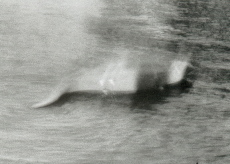Seagulls have learned that they can break open quahaugs (hard-shelled clams) by dropping them from great heights onto hard surfaces such as roads or rocks. This is a well-documented behavior. But in 1932, the
Vineyard Gazette reported that seagulls at Martha's Vineyard had learned an even more remarkable trick. They were killing rats by deliberately dropping quahaugs on them, and then feasting on the dead rats. The Gazette claimed that the gulls would soar aloft to an unusual height with a heavy quahaug in their beaks, then would hover and shift their position, gauge the wind, and finally "drop the shellfish with a precision that almost never fails to connect with the rodent below, knocking it unconscious or killing it outright on the spot, whereupon the gulls descend and feast on fresh meat." These so-called "bomb-dropping sea gulls" gained wide coverage in the media. However, hoax-debunker Curtis MacDougall later cited the story as an example of the kind of tall tales that were frequently printed by small newspapers in the early 20th Century. The idea was to boost local tourism by getting the name of the town or region reported in papers nationwide.

 On November 12, 1933, Hugh Gray was walking back from church along the shore of Loch Ness when, so he later claimed, he saw an "object of considerable dimensions—making a big splash with spray on the surface" of the Loch. Luckily he had his camera with him, so he began snapping pictures. Only one of the pictures showed anything. Nessie believers hailed it as the first photographic evidence of the monster. Skeptics, however, dismissed it as a blurry mess that doesn't show anything at all. Many have suggested that it looks like a distorted image of a dog (perhaps Mr. Gray's own) carrying a stick in its mouth as it swims through water.
More…
On November 12, 1933, Hugh Gray was walking back from church along the shore of Loch Ness when, so he later claimed, he saw an "object of considerable dimensions—making a big splash with spray on the surface" of the Loch. Luckily he had his camera with him, so he began snapping pictures. Only one of the pictures showed anything. Nessie believers hailed it as the first photographic evidence of the monster. Skeptics, however, dismissed it as a blurry mess that doesn't show anything at all. Many have suggested that it looks like a distorted image of a dog (perhaps Mr. Gray's own) carrying a stick in its mouth as it swims through water.
More…